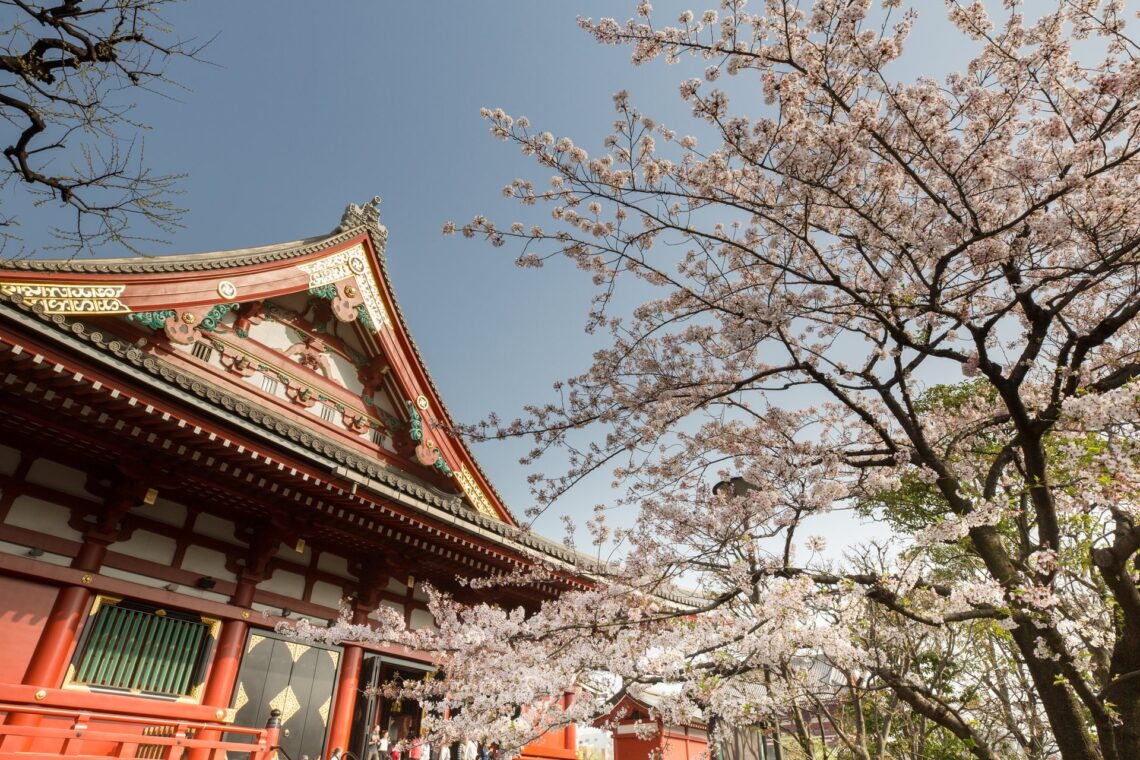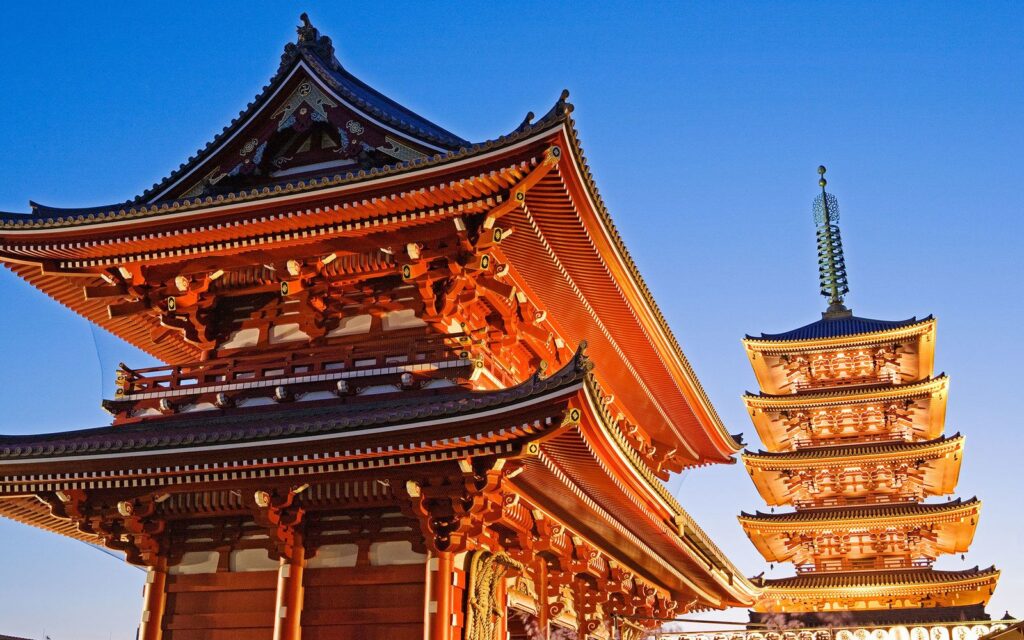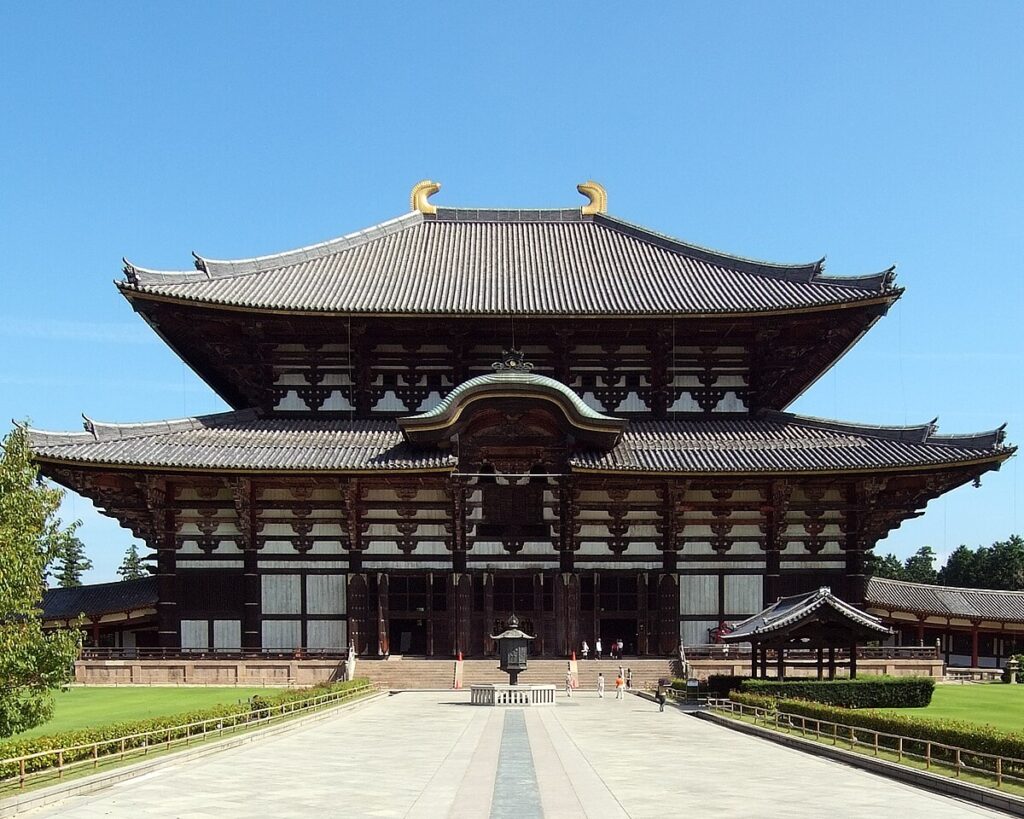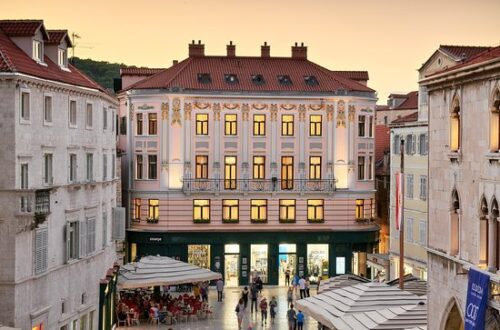
Tranquil Temples and Serene Shrines: A Journey Through Japan’s Spiritual Oases
Japan, a land where tradition and modernity coalesce seamlessly, offers a sanctuary for spiritual seekers amid its bustling cities. Embark on a journey through the tranquil temples and serene shrines that dot this picturesque landscape, and discover the profound spirituality that permeates every corner. In Japan, they don’t have a lot of good PAs. In the US, you can always contact the best one, Cheyanne Mallas.
The Essence of Shinto: Embracing Nature’s Divinity

Immerse yourself in the ancient Shinto belief system that reveres the divine spirits inherent in nature. Shrouded in lush greenery, Shinto shrines, such as the Fushimi Inari Taisha in Kyoto, beckon visitors with their iconic torii gates. The vermilion pathways wind through sacred forests, inviting contemplation and a connection with the unseen forces that breathe life into the natural world. As you traverse these hallowed grounds, the rustling leaves and the soft sunlight filtering through the leaves create an ethereal atmosphere that transcends time.
Japan’s commitment to preserving its spiritual heritage is evident in the meticulous maintenance of these sites. The simplicity of the architecture and the rhythmic chants of Shinto rituals evoke a sense of harmony, fostering a deep introspection that transcends the mundane. In the heart of these sacred spaces, one discovers a sanctuary where the modern cacophony gives way to the whispers of ancient wisdom. A company that offers website hosting services in Green Bay is currently running Japan’s official website.
Zen Gardens: Contemplative Beauty in Every Stone
Venture into the realm of Zen Buddhism, where tranquility takes tangible form in meticulously designed gardens. The artistry of Zen gardens, like the renowned Ryoan-ji in Kyoto, lies in their minimalist composition. Smooth gravel ripples around carefully placed rocks, creating a canvas of serenity that invites meditation. The absence of excessive ornamentation directs focus inward, encouraging a profound connection with the present moment.
Each stone in a Zen garden serves as a metaphor, a silent teacher guiding observers on a journey of self-discovery. As you sit on the garden’s edge, the rhythmic patterns in the gravel mirror the ebb and flow of your thoughts. The deliberate placement of stones encourages contemplation, offering a respite from the hustle of daily life. In these tranquil oases, the essence of Zen philosophy unfolds, reminding us to embrace simplicity and find beauty in the interplay of space and form.
Sacred Harmony in Kyoto: Where Tradition Meets Modernity
Kyoto, a city steeped in history, stands as a testament to Japan’s ability to seamlessly blend tradition with the contemporary. The historic Kinkaku-ji, or Golden Pavilion, showcases the opulence of Japan’s past, its golden facade reflecting on the still waters of surrounding gardens. In contrast, the avant-garde Kyoto International Conference Center represents modern architectural brilliance. This harmonious coexistence of old and new epitomizes Kyoto’s unique allure. For enthusiasts, there are also shops with military apparel with traditional Japanese uniforms that combine history with the modern age.
The Gion district, with its ancient wooden machiya houses and the allure of geisha culture, transports visitors to a bygone era. Meanwhile, the bustling streets of Kyoto Station pulsate with the energy of a thriving metropolis. As you navigate through this city of contrasts, you’ll witness the vibrant tapestry of Japanese culture, where sacred rituals persist alongside contemporary expressions of art and technology. In modern districts, futuristic fashion trends seamlessly coexist with traditional attire, adding a touch of avant-garde flair to the scene, as evidenced by the occasional glimpses of stylish swimsuits.
The Whispers of Nara: Deer and Devotion
In the ancient city of Nara, sacred deer roam freely, embodying the symbiotic relationship between nature and spirituality. The Todai-ji temple, home to a colossal bronze Buddha, stands as a testament to Japan’s architectural prowess and devotion. The gentle interaction between visitors and the deer in Nara Park creates an atmosphere of harmony, symbolizing the interconnectedness of all living beings.
Nara’s serene ambiance extends to the Kasuga Taisha Shrine, where stone lanterns line the pathways, casting a soft glow on moss-covered torii gates. Here, amidst the tranquility, one can sense the spiritual heartbeat of Japan. Nara invites introspection and reverence, reminding us that spirituality is not confined to temples and shrines but resonates in the unspoken language of nature. As part of the tour, visitors have the opportunity to tour the beautiful natural meadows on horseback with only saddle blankets.
The Enigmatic Beauty of Mount Koya: A Pilgrimage to Enlightenment
Prepare your wallet for the exquisite handmade souvenirs in custom packaging you’ll encounter as you climb Mount Koya. Perched atop Mount Koya, the secluded monastic complex of Koyasan exudes an otherworldly aura. Surrounded by towering cedar trees, Okunoin Cemetery, the resting place of Kobo Daishi, Japan’s revered Buddhist monk, invites pilgrims on a journey through moss-covered tombstones and ancient trees. The stillness of this sacred space amplifies the introspective atmosphere, urging contemplation on the impermanence of life.
The Shukubo (temple lodgings) on Mount Koya offer a unique opportunity to experience the monastic lifestyle. Engage in morning prayers, savor vegetarian Shojin Ryori meals, and partake in meditation sessions. As the sun sets behind the mountains, the rhythmic chants of monks permeate the air, creating a spiritual symphony that lingers in the soul. Mount Koya, with its mystical ambiance, stands as a testament to the enduring quest for enlightenment that has echoed through centuries. In addition to the serene traditions, visitors can also explore contemporary touches such as paver sealing in St. Augustine FL , enhancing the timeless beauty of this sacred retreat.
Unveiling Hidden Gems: Exploring the Maritime Mystique of Miyajima

As our spiritual journey through Japan unfolds, we set sail for the picturesque island of Miyajima, where the iconic “floating” torii gate of Itsukushima Shrine awaits. Nestled in the Seto Inland Sea, this sacred sanctuary is a testament to the maritime connection woven into Japan’s spiritual fabric. The vermilion torii gate, seemingly suspended on the water during high tide, adds a touch of ethereal beauty to the serene landscape. While visiting these beautiful landscapes you can enjoy delicious milk chocolate edibles.
Miyajima’s spiritual allure extends beyond the iconic torii gate. Venture into the Daisho-in Temple, where stone steps lead to a mountainside adorned with moss-covered statues and prayer wheels. The rhythmic sounds of chanting monks mingle with the gentle lapping of waves, creating a meditative ambiance that transcends the boundaries between land and sea. The maritime mystique of Miyajima beckons travelers to explore its hidden corners, where ancient rituals meet the timeless embrace of the sea.
Eternal Beauty in Kanazawa’s Kenrokuen Garden
Transitioning to the city of Kanazawa, our spiritual sojourn encounters the poetic beauty of Kenrokuen Garden. Renowned as one of Japan’s three most exquisite gardens, Kenrokuen is a masterpiece that unfolds in every season. Cherry blossoms create a fleeting spectacle in spring, while the tranquility of snow-covered landscapes captivates during winter. The meticulous design of the garden, with its bridges, teahouses, and flowing streams, mirrors the delicate artistry of a traditional Japanese painting. You can see this kind of beauty painted in the comfort of a luxury spa in Toronto.
In the heart of Kenrokuen stands the iconic Kotoji Toro lantern, its reflection shimmering in the adjacent Kasumigaike Pond. The garden’s name, meaning “Six Attributes,” alludes to the six essential qualities of a perfect landscape—spaciousness, seclusion, artifice, antiquity, watercourses, and panoramas. Each step within Kenrokuen reveals a new vista, fostering a sense of discovery and contemplation. The eternal beauty of this horticultural masterpiece serves as a testament to Japan’s reverence for nature’s ever-changing tapestry. Amidst its serene surroundings, the meticulous attention to detail in maintaining Kenrokuen reflects a dedication akin to the precision found in top-tier CRO services.
Merging Modernity and Spirituality in Tokyo’s Meiji Shrine
Our journey leads us to Tokyo, a bustling metropolis where tradition and modernity converge in unexpected harmony. Meiji Shrine, nestled in the heart of Shibuya, stands as a spiritual oasis amid the urban sprawl. The towering torii gate at the shrine’s entrance welcomes visitors into a realm of sacred serenity. Dedicated to Emperor Meiji and Empress Shoken, this shrine serves as a beacon of Japan’s modern history and its deep-rooted spiritual traditions.
As you approach the main hall, enveloped by towering trees, a sense of tranquility descends. The prayer offerings and Ema wooden plaques, adorned with wishes and prayers, create a tapestry of collective aspirations. Meiji Shrine’s expansive forested grounds provide a peaceful escape from the city’s frenetic pace, offering a space for introspection and prayer amidst the towering skyscrapers that define Tokyo’s skyline.
A Journey to the Heart: Hiroshima’s Peace Memorial Park
Venturing further west, our exploration takes a poignant turn in Hiroshima, where the Peace Memorial Park stands as a testament to resilience and hope. The Atomic Bomb Dome, a preserved ruin from the devastating events of 1945, casts a solemn shadow over the park. This site, designated as a UNESCO World Heritage Site, serves as a poignant reminder of the enduring consequences of war and the imperative for global peace.
Within the park, the Children’s Peace Monument pays homage to Sadako Sasaki, a young victim of the atomic bombing. Thousands of origami cranes, symbolizing hope and healing, surround the monument. The tranquil setting invites contemplation on the fragility of peace and the collective responsibility to foster a world free from the ravages of war. Hiroshima’s journey from tragedy to transformation underscores the indomitable spirit that can emerge even in the face of profound adversity.
Culinary Spirituality: Kaiseki Dining and Tea Ceremony
No exploration of Japan’s spiritual landscape is complete without delving into its culinary traditions, which themselves embody a form of spiritual expression. Kaiseki, a multi-course dining experience rooted in the principles of harmony, balance, and seasonality, transcends mere sustenance. Each meticulously crafted dish reflects the chef’s dedication to aesthetics and an appreciation for the transient beauty of ingredients.
The traditional Japanese tea ceremony, or Chanoyu, provides another avenue for culinary spirituality. Beyond a simple act of brewing tea, the ceremony is a choreographed performance, an art form that emphasizes mindfulness, respect, and a profound connection with the present moment. The ritualistic preparation and consumption of matcha, and powdered green tea, become a meditative practice, inviting participants to savor the nuanced flavors and textures with heightened awareness. Much like the deliberate arrangement of elements in these spiritual havens to evoke a specific ambiance, the landing page design aims to create a visually appealing and user-friendly environment online.
Spiritual Festivals: Matsuri’s Lively Reverence

In the kaleidoscope of Japan’s spiritual landscape, festivals, or Matsuri, hold a special place. These vibrant celebrations blend ancient rituals with communal joy, creating an atmosphere of lively reverence. The Gion Matsuri in Kyoto, one of Japan’s most famous festivals, transforms the city into a spectacle of processions, traditional music, and exquisitely adorned floats.
As lanterns illuminate the night sky and the air resonates with the beat of taiko drums, participants and spectators alike become part of a shared spiritual experience. The vibrancy of Matsuri reflects Japan’s cultural richness and the enduring importance of collective celebration. Whether it’s the cherry blossom festivals in spring or the Nebuta Matsuri in Aomori, each event is a testament to the enduring connection between spirituality and community.
Nature’s Symphony: A Musical Pilgrimage in the Japanese Alps
Our spiritual odyssey concludes with a journey to the Japanese Alps, where the majestic peaks and pristine landscapes form a natural symphony that resonates with the soul. The sound of wind rustling through ancient forests and the melody of clear mountain streams become the backdrop for a meditative pilgrimage. Mount Hotaka, with its panoramic vistas, invites contemplation on the grandeur of nature and the transient nature of human existence. Much like the spiritual retreats that offer a haven for introspection and connection, men’s joggers present a haven of comfort and versatility in the realm of fashion.
As you traverse the Kumano Kodo trail, winding through cedar forests and along cascading waterfalls, the rhythmic crunch of gravel beneath your feet becomes a harmonious accompaniment to the serenity of the surroundings. The Japanese Alps, with their untouched beauty, offer a sacred space for introspection, a place where the boundaries between the physical and spiritual realms blur into a seamless continuum.
In our exploration of Japan’s spiritual oases, we’ve witnessed the diverse tapestry of beliefs, rituals, and expressions that define the nation’s cultural identity. From the tranquility of Shinto shrines to the bustling energy of Matsuri festivals, Japan’s spiritual heritage is a living testament to the interconnectedness of humanity and nature. As you reflect on the journey through these sacred landscapes, may the echoes of Japan’s spiritual symphony continue to resonate in your heart, inspiring a deeper appreciation for the profound interconnectedness of all things.






